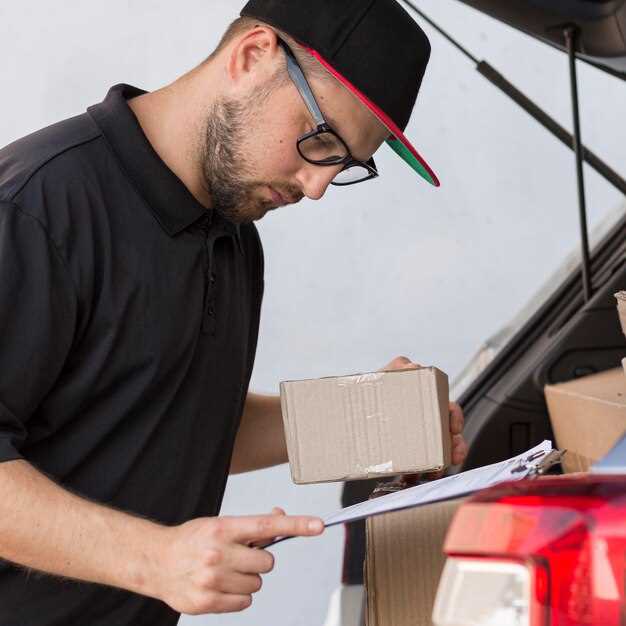How to inspect your car after delivery

Purchasing a new car is an exciting milestone, but it’s crucial to ensure that your vehicle has arrived in perfect condition after transport. The inspection process not only helps you identify potential issues but also ensures that you start your journey on the right foot.
As you approach the delivery of your new car, it’s essential to keep specific checks in mind. Begin by examining the exterior, looking for scratches, dents, or paint imperfections that may have occurred during transport. Next, inspect the interior for any signs of damage, such as stains or malfunctioning electronics. Pay attention to the lights, tires, and other essential components, as they are vital for your vehicle’s performance.
Additionally, don’t forget to review the documentation associated with your new car. Ensure all necessary papers, warranties, and manuals are included and that the vehicle identification number (VIN) matches what was provided at the time of purchase. A thorough inspection not only safeguards your investment but also enhances your driving experience from day one.
Checking for Exterior Flaws and Paint Quality

After taking delivery of your new car, a thorough inspection is essential to identify any exterior flaws and assess the paint quality. Begin by examining the body panels for any dents, scratches, or irregularities that may have occurred during transport. Pay special attention to the edges of doors, hoods, and fenders, as these areas are often more prone to damage.
Next, check the consistency of the paint finish across the entire vehicle. Look for variations in color or texture, which may indicate improper application or repairs. Using a flashlight can help reveal imperfections that are difficult to see in natural light. Ensure that the paint is smooth to the touch, and that there are no rough spots, bubbling, or peeling.
Also, inspect the alignment of body panels and the fit of doors and trunk lids. Gaps should be even and uniform; any misalignment could point to potential issues from manufacturing or transport. If you notice any discrepancies, document them for your records and communicate them to your dealer.
Finally, if you can, evaluate the paint protection. Some vehicles may come with a factory-installed protective coating. Checking the label or documentation provided can clarify this. If no protection is present, consider applying a ceramic coating or sealant to safeguard against future wear and tear.
Evaluating Interior Components and Features
Upon delivery of your new car, a thorough inspection of the interior components and features is crucial to ensure everything functions as expected. Begin by assessing the quality of materials used in the interior. Check for any signs of wear or damage, such as scuffs on the dashboard, uneven stitching in the upholstery, or scratches on the console. These details can impact both the aesthetics and longevity of your vehicle.
Next, test all electronic features. Sit in the driver’s seat and verify that the infotainment system operates smoothly. Ensure that the touchscreen responds accurately, that all buttons and knobs work properly, and that connectivity options, such as Bluetooth and USB ports, function as intended. Listen for any strange noises when operating these features, which could indicate underlying issues.
Additionally, evaluate the comfort and functionality of seats. Adjust every seat to check for proper operation, including lumbar support and heating/cooling options. Inspect the back seat space for comfort, especially if you frequently transport passengers. Ensure that seatbelts retract smoothly and that safety features, such as airbags and child seat anchors, are accessible and functional.
Don’t forget to check storage compartments throughout the vehicle. Open and close glove boxes, center consoles, and door pockets to ensure they latch correctly and can accommodate your items effectively. Evaluate the trunk space as well; verify that it provides enough room for your anticipated storage needs and that the trunk release mechanism operates flawlessly.
Finally, take a moment to inspect the overall cleanliness of the interior. Ensure that no debris from transport remains in the vehicle. A clean and well-maintained interior sets the standard for your driving experience. By completing a comprehensive inspection of these components and features, you can assure that your new car meets your expectations and functions optimally right from the start.
Conducting a Thorough Test Drive for Performance

Performing a comprehensive test drive is crucial for assessing the overall performance of your new car. Ensure you schedule adequate time to evaluate various aspects of the vehicle during this process. Start your inspection in a safe and familiar area to familiarize yourself with the car’s handling and features.
Begin by checking the acceleration and braking response. Smoothly accelerate from a complete stop to determine how quickly the car responds to throttle input. Pay attention to any unusual sounds or vibrations that may indicate potential issues. On the other end, test the brakes by applying them firmly at different speeds. Observe how responsive they are and ensure there is no drifting or pulling to one side.
During your drive, transport the vehicle through various types of terrain. This includes highway stretches, city streets, and winding roads. These different environments will help you assess the suspension system’s performance, stability during turns, and overall comfort level of the ride. Listen for any rattling or clunking noises, which could signal problems with the car’s components.
Evaluate the steering feel and accuracy by making sharp turns and changing lanes. A well-functioning steering system should provide precise feedback and allow for effortless maneuvering. Additionally, check the alignment by observing if the car tracks straight while driving on a level road.
Lastly, inspect the car’s infotainment system and other onboard technologies. Ensure that everything from Bluetooth connectivity to navigation features works seamlessly. A successful test drive will give you confidence in your vehicle’s performance and help you identify any issues that need addressing before finalizing your purchase.

